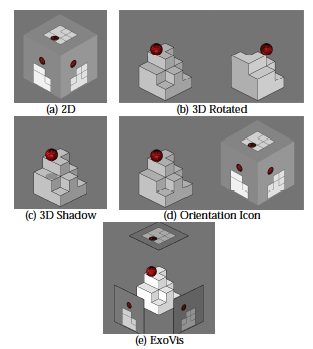Visualization Task Performance with 2D, 3D, and Combination Displays

We describe a series of experiments that compare 2D displays, 3D displays, and combined 2D/3D displays (orientation icon, ExoVis, and clip planes) for relative position estimation, orientation, and volume of interest tasks. Our results indicate that 3D displays can be very effective for approximate navigation and relative positioning when appropriate cues, such as shadows, are present. However, 3D displays are not effective for precise navigation and positioning except possibly in specific circumstances, for instance when good viewing angles or measurement tools are available. For precise tasks in other situations, orientation icon and ExoVis displays were better than strict 2D or 3D displays (displays consisting exclusively of 2D or 3D views). The combined displays had as good or better performance, inspired higher confidence, and allowed natural, integrated navigation. Clip plane displays were not effective for 3D orientation because users could not easily view more than one 2D slice at a time and had to frequently change the visibility of individual slices. Major factors contributing to display preference and usability were task characteristics, orientation cues, occlusion, and spatial proximity of views that were used together.
 Top
Top
- Tory, Melanie
- Kirkpatrick, Arthur E.
- Atkins, M. Stella
- Möller, Torsten
 Top
Top
Category |
Journal Paper |
Divisions |
Visualization and Data Analysis |
Subjects |
Computergraphik |
Journal or Publication Title |
IEEE Transactions on Visualization and Computer Graphics |
ISSN |
1077-2626 |
Date |
January 2006 |
Export |
 Top
Top




